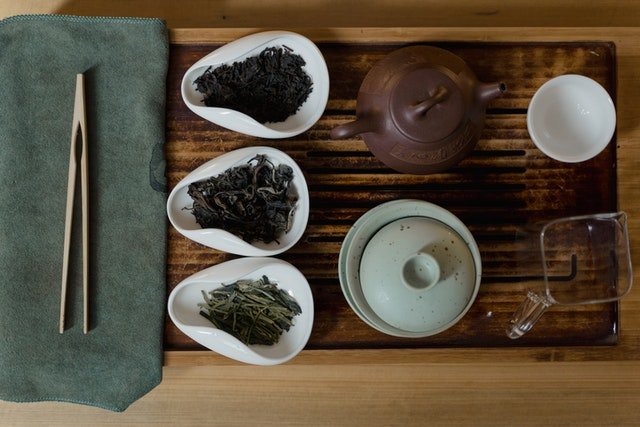
Much is said about tea and its properties, but do you really know what tea is good for? Black, red, green, all types of tea are made from the same plant, Camellia sinensis. This means that they share some properties, but the fact that they go through different manufacturing processes means that each tea provides slightly different health properties.
Below, we briefly tell you what each variety of tea is good for.
What is green tea good for?
Green tea has become one of the favorites throughout the world due not only to its pleasant vegetable flavor but also to its multiple health properties.
Being one of the least processed teas in existence, it has interesting proportions of polyphenols, those antioxidants that we mentioned earlier that help fight oxidative stress and cell damage. In this way, its consumption, like that of white tea, has a preventive action against premature aging and various chronic diseases, such as cardiovascular ones.
On the other hand, several studies have delved into the effects of green tea on cholesterol. The evidence indicates that the consumption of green tea decreases the concentrations of “bad” cholesterol in the blood, one of the great markers of risk of cardiovascular diseases.
Green tea is a good choice for relieving illnesses caused by bacteria, such as sore throats, due to its proven antimicrobial properties. And now yes, speaking specifically of one of the properties that has had more to do with its growing fame: it is true that green tea can help with weight loss. This is because the combination of catechins with caffeine would allow fat burning, according to different studies.
What is red tea good for?
Red tea or Pu-erh, like all varieties from the Camellia sinensis plant, has antioxidant power that reduces the risk of degenerative and heart diseases.
One study even pointed out that pu-erh inhibits the expression of neurotransmitters such as glutamate, a substance whose presence in excess causes neuronal death. In addition to being considered a brain protector, this tea is believed to have anti-cancer effects. However, more studies are necessary.
On the other hand, researchers have concluded that consuming this tea helps reduce blood triglyceride, cholesterol, and glucose levels, as well as adipose tissue, as well as improve symptoms of inflammation due to its effects. anti-inflammatories.
Some time ago, we wrote a longer article on the health benefits of red tea that can help you extend this information.
What is black tea good for?
Perhaps the main health benefit of drinking black tea regularly is that research has shown that it lowers total and bad cholesterol levels, and also improves glucose tolerance, thus accelerating metabolism and allowing weight loss.
Also, some researchers have associated its regular intake with a reduced risk of Parkinson’s. This relationship is thought to be due to the caffeine concentration of this variety.
This information is a super-summary. If you want to read in detail about black tea, check out this reference.
Properties of white tea
Have you ever tried white tea? Its flavor is subtle and delicate, slightly fruity and sweet. Undoubtedly, a wonderful option for the most demanding palates.
In addition, because it is an unprocessed tea, since it is only slightly steamed and dried in the sun, without going through an oxidation process, it has a higher concentration of polyphenols than other teas. These substances have antioxidant properties, that is, they help fight cell degeneration, fighting free radicals and protecting the body from long-term damage. Thus, drinking white tea on a regular basis would help us reduce the risk of heart disease, Alzheimer’s, premature aging and even cancer.
On the other hand, it also stands out as a supplement for diets since it is a diuretic. In fact, several studies have indicated that it would increase metabolism by a higher percentage than consuming green tea, the trendy infusion for weight loss.
Oolong tea and health

Oolong tea is considered semi-oxidized, and it can be said that it is halfway between a black tea, whose oxidation is complete, and a green tea, whose oxidation process is slight. In this way, depending on its processing, we will obtain a tea with a flavor and properties closer to one or the other.
In general terms, the main health benefit of oolong tea, also called blue tea, is to speed up metabolism, promoting weight loss. For this reason, traditional Chinese medicine has been using it for hundreds of years for this purpose.
Another of its qualities is to improve blood sugar levels and protect against all kinds of degenerative diseases, thanks to its antioxidant content.
Drinking tea is not only comforting for the palate but also gives us all kinds of benefits for the body. So do not hesitate and include varieties of tea in your day to day. You will not regret!
